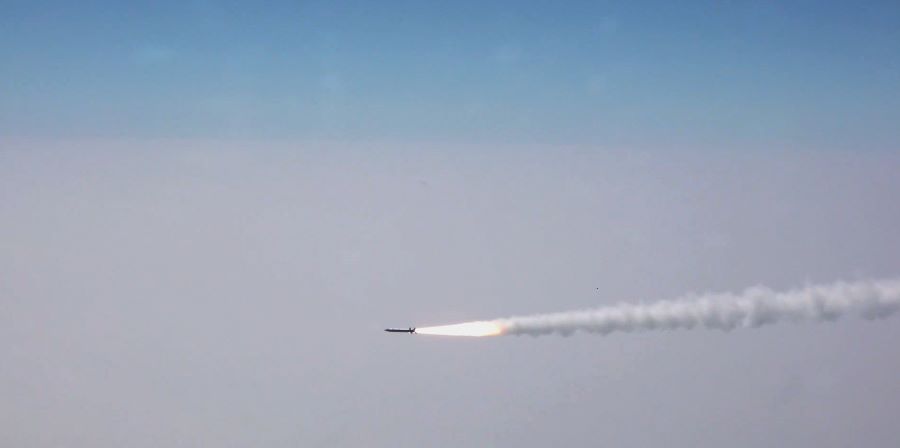India has reached a major milestone in its defence capabilities with the successful test-firing of a RudraM-II air-to-surface missile from an Indian Air Force (IAF) Su-30 fighter jet off the coast of Odisha. The Defence Ministry has confirmed that the missile’s flight testing achieved all trial objectives, signifying a significant advancement in India’s Indigenous solid-propelled air-launched missile system.
The RudraM-II missile features advanced indigenous technologies developed by various DRDO (Defence Research and Development Organisation) laboratories. According to an official statement, the successful flight test conducted around 11:30 a.m. on 29 May confirmed the missile’s propulsion system, control, and guidance algorithm. The missile’s exceptional performance was verified through flight data captured by range tracking instruments, including electro-optical systems, radar, and telemetry stations strategically positioned at various locations, including onboard ships.
Defence Minister Rajnath Singh congratulated the DRDO, the Air Force, and the industry on the successful test flight of RudraM-II. He emphasised that this test has further consolidated the role of the RudraM-II system as a force multiplier for the armed forces. Secretary of the Department of Defence R&D and Chairman, DRDO, Samir V Kamat, also commended the DRDO team for their untiring efforts and contributions leading to the successful flight test.
The @DRDO_India has successfully flight tested the RudraM-II Air-to-Surface missile from Su-30 MK-I platform of Indian Air Force (IAF), off the coast of Odisha.
Raksha Mantri Shri @rajnathsingh congratulated DRDO, IAF and industry on the successful test flight of RudraM-II from… pic.twitter.com/DtgcZF4CXi
— रक्षा मंत्री कार्यालय/ RMO India (@DefenceMinIndia) May 29, 2024
Rudram Missile – A Game Changer in Air-to-Surface Missiles
Rudram, India’s first anti-radiation missile (ARM), is an Air-to-Surface missile developed by DRDO. It is designed to detect, track, and neutralise the enemy’s radio frequency sources, including radar, communication assets, and other radio frequency sources. The missile’s unique navigation mechanism, a combination of a satellite-based Global Positioning System (GPS) and an inertial navigation system, ensures precision. It also features a ‘passive homing head’ for guidance, a distinctive capability that enables it to strike targets accurately even if the radiation source switches off during the engagement.
Advanced Versions
The RudraM-1 missile is designed to effectively suppress enemy air defences (SEAD). More advanced versions, such as RudraM-2 and RudraM-3, are currently in development with ranges of 350 km and 550 km, respectively. The collaborative efforts of various DRDO facilities, IAF formations, and Hindustan Aeronautics Ltd. have been instrumental in integrating Rudram missiles with fighter aircraft. The development of these missiles began around eight years ago, and future tests and inductions are planned to enhance the IAF’s air superiority tactical capability significantly.
The successful test-firing of the RudraM-II missile signifies a remarkable milestone for India’s defence capabilities. With continuous advancements in missile technology, India is poised to bolster its position in the realm of air-to-surface missile systems, thereby fortifying national security and defence preparedness.
Ravi Shankar






















